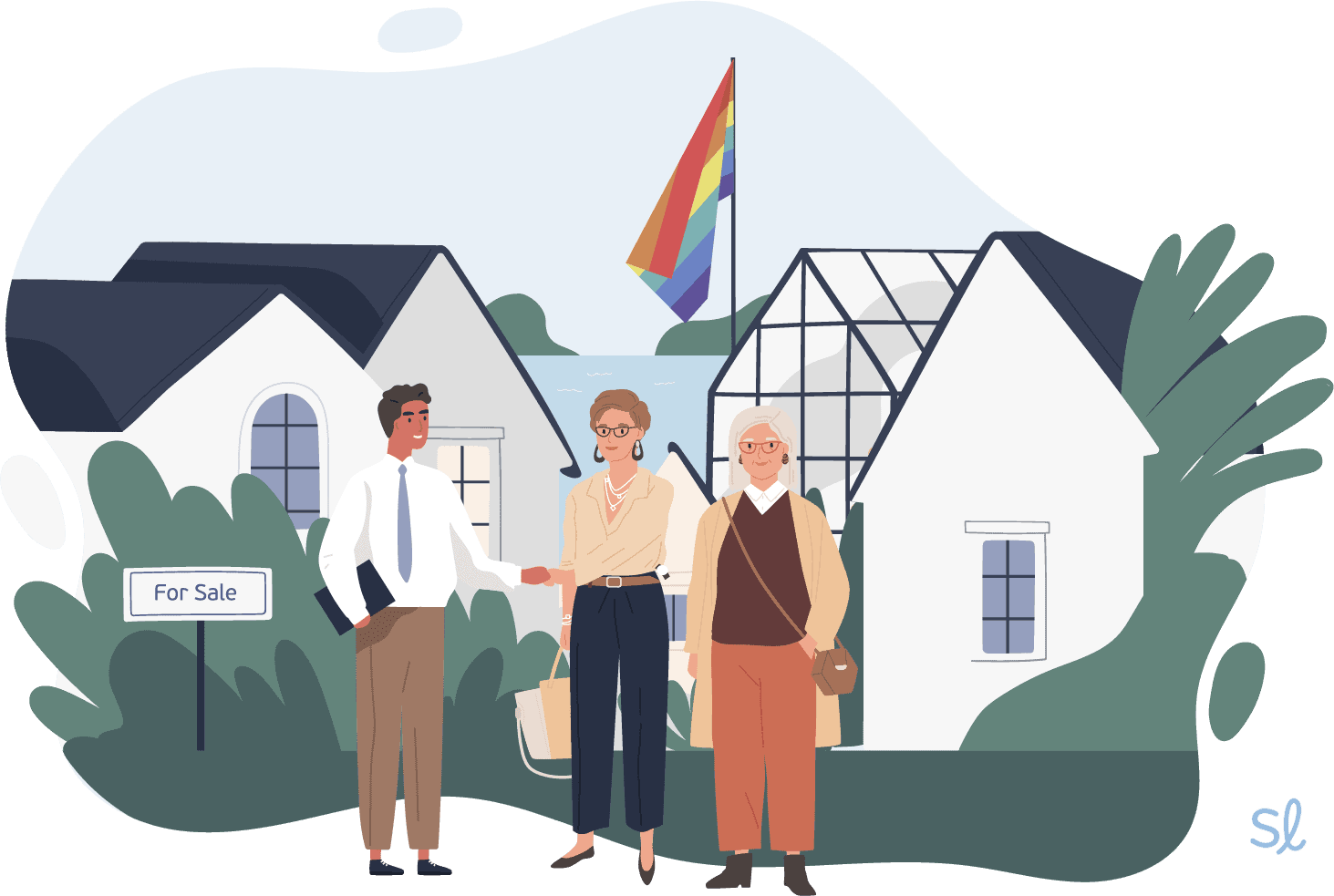Senior Cohousing
Senior cohousing provides a sense of community for active older adults.
SeniorLiving.org is supported by commissions from providers listed on our site. Read our Editorial Guidelines
Find Senior Cohousing Near You
Join 1,085,046 Seniors Who've Found Housing Communities on SeniorLiving.org.
Or Call: (855) 241-1699Find Senior Cohousing Near You
One of the primary concerns for older adults is the loss of a sense of community. This can happen when you retire and no longer go to work every day, or when your adult children move away. Seniors who are unable to drive are often housebound and lose their connection to the community around them. If you fall into these categories and worry about maintaining social connections, for both practical and emotional reasons, senior cohousing is a great solution. Senior cohousing communities are designed to facilitate a strong communal bond with other residents. If you are an active senior interested in joining a tight-knit community, keep reading to learn more about senior cohousing.
Table of Contents
What is Senior Cohousing?

Pro Tip: Unsure if a senior cohousing community is the right fit for you? Consult our guide to retirement communities to learn more about your options!
Cohousing communities are available to individuals of all ages. However, a senior cohousing community only permits residents over a certain age, such as 55. This allows older adults to live in a community tailored to their needs. In senior communal living, residents are more likely to share the same common interests, hobbies, and goals. Seniors can spend more time on activities for older adults rather than activities more suited for families or younger adults. For example, seniors in a cohousing community aren’t responsible for providing child care or carpooling with other adults, as would be the case in a general cohousing community.
Who Chooses to Live in a Senior Cohousing Community?
Older adults who previously lived in a general cohousing community will often transition to an elderly cohousing group. This way, they can maintain the same communal lifestyle while enjoying the unique benefits of a retirement community. However, anyone interested in being a part of a close community can benefit from senior cohousing. The ultimate goal of this type of community is to facilitate regular interaction among residents. This provides seniors with practical, social, economic, and environmental benefits, since every person is sharing resources.
Our free housing and care finder uses your unique needs to curate a list of the best options in your area.

SeniorLiving.org is supported by commissions from providers listed on our site. Read our Editorial Guidelines
Can I Live in Senior Cohousing If I Have Dementia or Require a Moderate Level of Care?
A senior cohousing community is primarily focused on active seniors who can contribute to the community’s overall needs. While you have your own private home, you are also expected to help out with the functioning of the neighborhood. This might include cooking meals one day a week, providing landscaping for the neighborhood, or organizing group outings once a month.
Pro Tip: Want to learn more about finding care for seniors with dementia? Read our guide to dementia memory care.
Older adults who suffer from some form of dementia or lack mobility would not be able to provide this level of contribution. In addition, most senior cohousing communities are not designed to provide 24/7 monitoring and nursing care. While some senior communities might choose to include memory care or assisted living services for their residents, they are the exception, not the standard.
SeniorLiving.org Is Now Livestreaming
We are hosting live Q&As with senior care and housing experts on our YouTube channel. Check out one of our latest streams below and tune in to upcoming streams @SeniorLiving.Org on YouTube!

Are There Senior Cohousing Options for LGBTQ Seniors?
Yes, some cohousing communities cater to LGBTQ older adults! For example, Village Hearth Cohousing community in Durham, North Carolina, provides a welcoming community for LGBTQ seniors. Anyone who is lesbian, gay, bisexual, transsexual, or simply an ally of this community will find a safe haven within this type of communal living neighborhood. If you’re looking for even more LGTBQ-friendly housing options for seniors, you can also reach out to the SAGE senior advocacy group.
How Does a Senior Cohousing Community Get Started?
The biggest difference between a senior cohousing community and a retirement community, such as an independent living apartment or assisted living, is the way the neighborhood is organized. To start a community, its founding residents come together and decide how they want to construct the neighborhood. For most cohousing communities, the goal is to minimize the impact on the environment and maximize efficiency.
Did You Know? One of the biggest barriers to starting a senior cohousing community is acquiring the funding to design and develop senior-friendly neighborhoods.1
For instance, rather than having a large lot size for each homeowner, there is typically no grassy space between homes. Instead, these houses are all connected using walking paths. Parking for cohousing communities is located on the periphery of the property, in a lot, which also improves the safety of the community and its residents. As a result, a cohousing community looks much different from a conventional neighborhood.
Once a group decides how they want to develop their senior cohousing community, each resident purchases an individual house or condo unit. These become part of a homeowners association that is managed by the cohousing community.
Is Senior Cohousing Available to Low-Income Seniors?
In some cohousing communities, affordable housing for seniors is available. For example, the first U.S. senior cohousing community, Silver Sage Village, has units that are permanently managed by the Boulder Housing Authority. These units are rated as affordable housing for seniors and are included in the Permanently Affordable Housing Program by the City of Boulder.2 If you are looking for low-income senior cohousing in your state, contact individual communities to see if they have affordable housing available.
FYI: Have questions about senior care or housing? We’re hosting livestreams on our YouTube @SeniorLiving.Org with experts who are ready to answer your questions and provide advice based on years of experience. Send your questions to help@seniorliving.org and we’ll answer them during our next livestream!
How to Find Senior Cohousing Near Me
As of 2019, there were more than 295 cohousing communities throughout the United States, with as many as 45 senior cohousing communities either established or in development.3
States that currently have a senior cohousing community or one under construction include:
- New Mexico
- North Carolina
- Virginia
- California
- Oklahoma
- Oregon
- Colorado
- West Virginia
- Washington
- Texas
- Florida
- Massachusetts
- New Hampshire
- Utah
New cohousing communities are popping up every year, so this isn't an exhaustive list. If your state isn’t on the list above, you can search online for “senior cohousing communities in [your state].” You can also use our senior housing directory. Simply type in your ZIP code, and we’ll provide a list of all the communities in your area based on your needs!
Depending on your lifestyle preferences, you can choose to live in a general cohousing community or one strictly for seniors. For instance, some older adults may want to live in a blended community that has more of a family structure, with residents of all ages. Others may be ready to transition to the quieter, slower pace of living of a senior community.
Not sure if senior cohousing is the right option for you or a loved one? Watch our video on the different types of senior housing below.

AARP Public Policy Institute. (2023). Cohousing for Older Adults.
City of Boulder. (2023). Permanently Affordable Homes Program.
The University of Tennessee. (2019). Faculty Member Explores Growing Trend of Senior Co-Housing.



